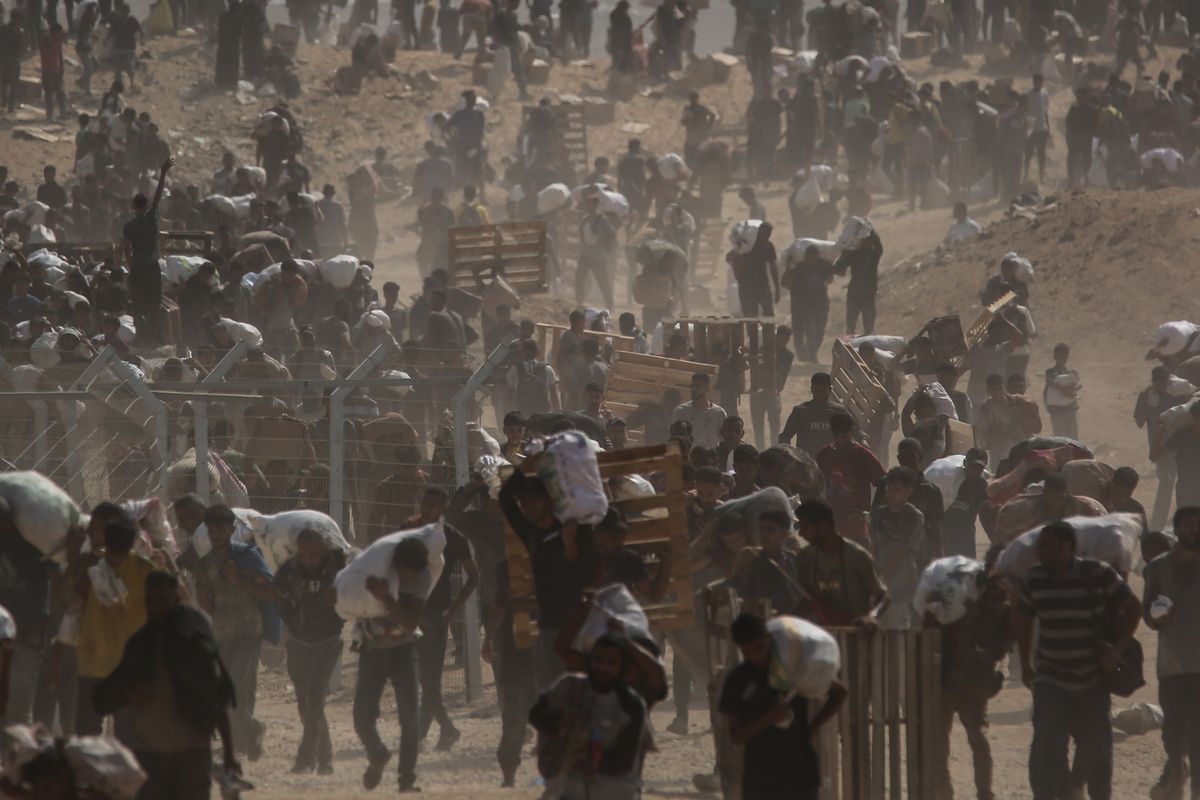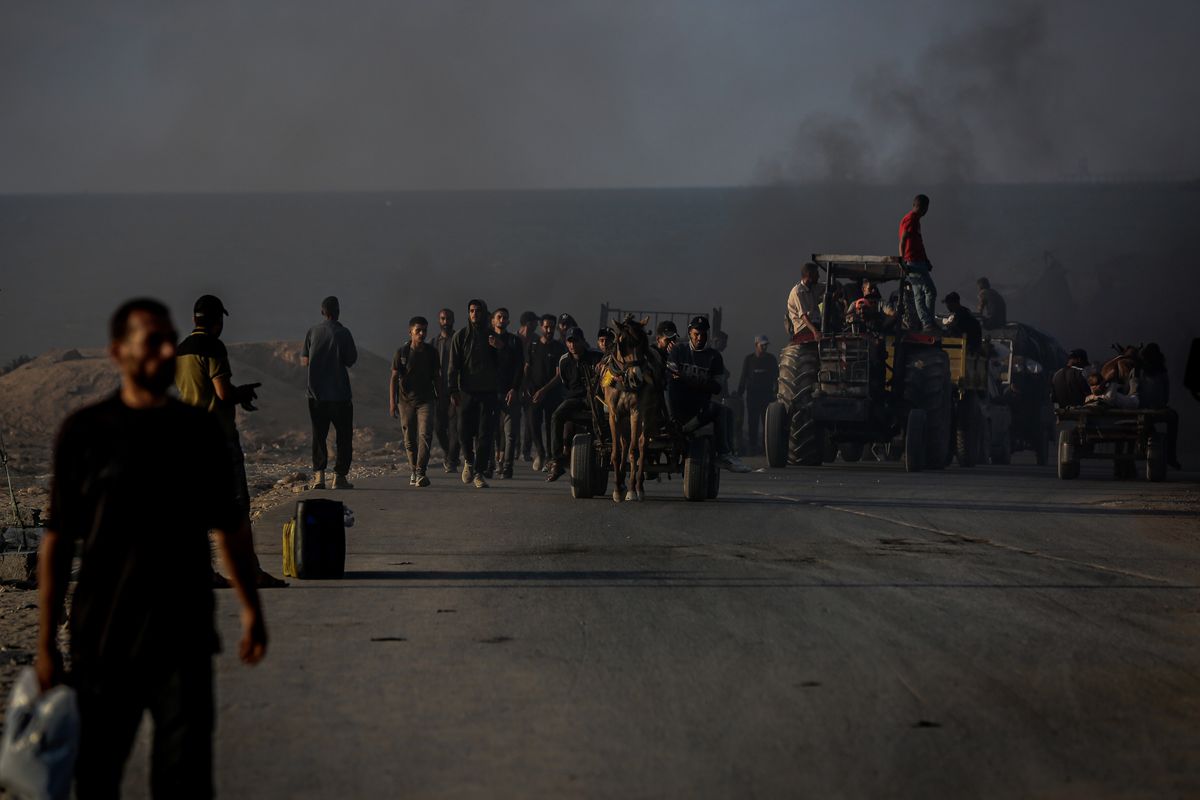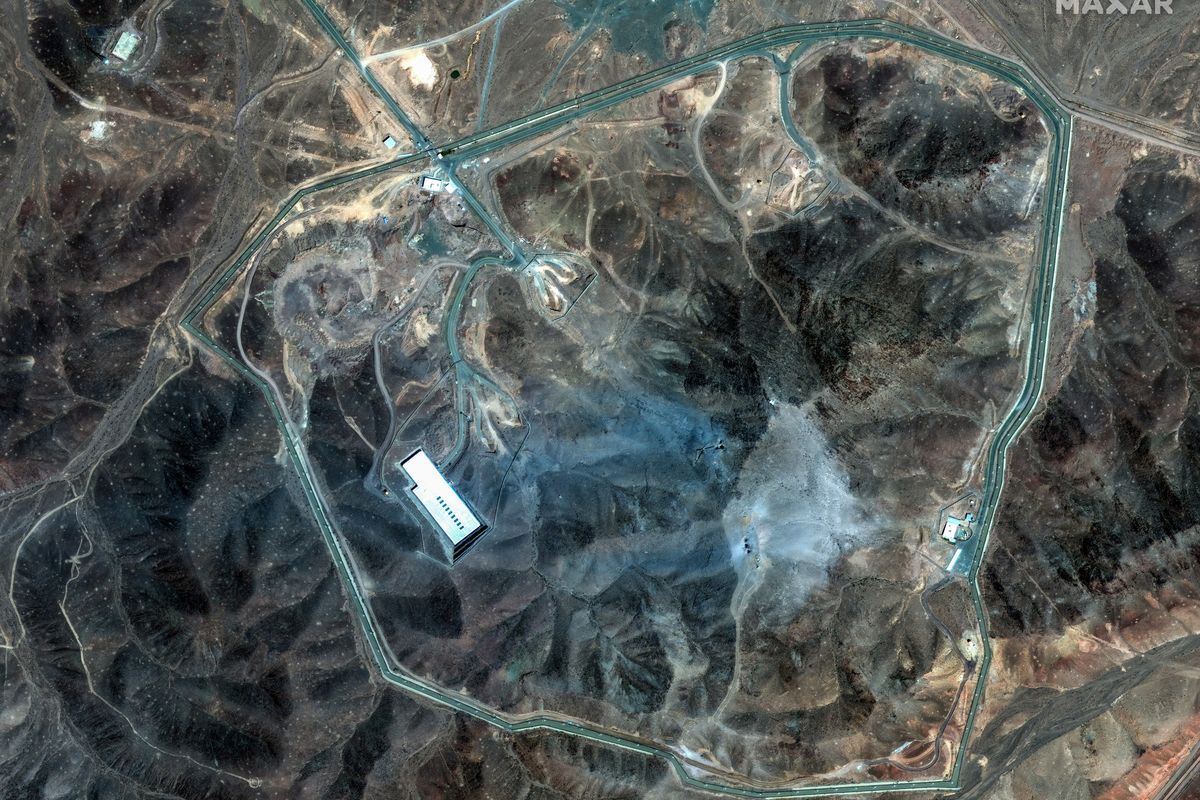President Donald Trump announced Monday that he would meet Iran’s leaders “anytime they want.” The President adding that he would meet Iranian President Hassan Rouhani without preconditions, and after high-profile meetings with North Korean President Kim Jung Un and Russian President Vladimir Putin, reiterating that he believes meeting with adversaries is the best path to resolving conflicts. With specific regard to Iran, however, the question remains whether such an offer in the current environment will tempt the Iranians, who believe that they have been repeatedly burned by U.S. bad faith.
Whether talks between the U.S. and Iran happen or not, Cipher Brief Expert Steven Ward writes on the possible long-term implications of a U.S.-Iran 'war of words' and the faint hope of realistic negotiations.
The strategic danger of an unabated war of words between Iran and the United States is more significant than Washington seems to realize. While President Trump suggests that U.S. pressure is setting the stage for eventual talks, Iran’s leaders have made it clear they are not interested in negotiating the terms of their surrender as expressed in Secretary of State Mike Pompeo’s Twelve Demands. This impasse threatens to lead to greater Iranian pushback followed by U.S. and allied responses and additional pressure. It is a good bet that numerous existing flashpoints will become more combustible and that at some point, everyone’s credibility will need validating.
Thus will a U.S.-Iran cold war, having already bled into ongoing regional proxy conflicts, begin its drift toward a hot war? Meanwhile, the men running the Islamic Republic, most of whom have been in Iran’s national security leadership since the 1980s, likely have a clear sense of end games favorable to regime survival and long-term regional security goals. With the right U.S. approach, however, this might include an opening to the type of grand bargain that has long eluded Tehran and Washington.
Many commentators seem to take comfort in the assessment that war is unlikely because of Tehran’s desire to avoid a military fight it knows it cannot win and the Trump Administration’s apparent lack of appetite for another conflict in the region. This is true enough. Increasingly belligerent stances, however, will unavoidably fuel suspicions about intentions and confuse interpretations of incidents in the ongoing conflicts in Yemen, Syria, and elsewhere. Recall that in the mid-1990s, Tehran apparently misinterpreted U.S. military buildups against Iraq as a threat and responded with defensive preparations on its Persian Gulf islands that heightened tensions. A similar set of military moves, or even an unintended confrontation that turns deadly, might easily escalate into broader hostilities in today’s chaotic regional environment.
The days following the recent U.S.-Iran ‘war of words’ have already witnessed threats and incidents that might escalate or spread regional hostilities. These developments have ranged from Iranian threats to go after violent Kurdish and Baloch militants inside Iraq and Pakistan, to Saudi Arabia’s temporary suspension of Red Sea oil shipments in response to Yemeni Houthi ship attacks. The Iranian-supported Houthis also claimed the latest in a series of aerial drone attacks on targets in the United Arab Emirates and Saudi Arabia that, together with ongoing Houthi missile attacks, raise the specter of an eventual highly lethal strike that further enflames hatreds and fears.
Steven Ward, Former Senior CIA Analyst
"Threats against U.S. interests in Iraq and Afghanistan and potential Lebanese Hezbollah actions in the Levant, meanwhile, remain perennial concerns. Throw in terrorist, cyber, and other activities where perpetrator attribution is often difficult—and vulnerabilities to “false-flag” operations by third parties seeking to exacerbate tensions—and neither Washington nor Tehran can be confident they are fully in control of the situation."
Of course, a militarily superior United States can be certain of winning the major battles against Iran and of stripping away its more easily targeted large weapon systems and fixed installations. But, does Washington really need another reminder that technological prowess alone does not win wars? The Iranians, close observers of the seventeen-year-old conflict in Afghanistan, and the fifteen years of war and violent instability in Iraq, have long prepared to suffer severe initial losses, but persist in irregular and guerrilla warfare using Iran’s daunting geography, terrorism, and sporadic attacks across the region by surviving mobile missile units, to inflict pain on its enemies. As Islamic Revolutionary Guards Corps (IRGC) Quds Force Commander Qassem Soleimani recently warned, the United States “may begin the war, but it will be us who will end it.”
The prospect of a defiant Iran that believes it wins by not losing, and yet another war without end in the Middle East should give Trump Administration officials’ pause. Their policy of seeking what amounts to an unconditional surrender risks putting Iran in a corner. While it is clear that the clerical regime’s domestic political and economic situation is deteriorating, an increase in its willingness to take risks—at home and in the region—to preserve its hold on power and defend Iran’s sovereignty seems more likely than capitulation. The Islamic Republic has survived similar sanctions and isolation in the past. The leadership apparently views itself as strong enough to withstand this latest round of U.S. pressure until it subsides, the Iranian economy adapts, or events in the region once again turn in its favor.
From an Iranian perspective, its long-term strategic goals might be better served by continued resistance to U.S. demands, activation of additional proxy operations against its enemies, and even war. In general, Iran’s top security goals have long been to increase its standing in the region and simultaneously reduce America’s presence and influence. Defying the United States while maintaining its own power will send a strong message to its neighbors and to Sunni Arab and other Muslim publics about prevailing over U.S. influence. This may not increase Shia Iran’s prestige and popularity, but relative to any decline in America’s standing in the region, the Islamic Republic would view this as a win.
More worryingly, based on Iran’s recent history of taking advantage of regional turmoil to upset the Middle Eastern status quo, Tehran might expect that an escalation of hostilities in Yemen, Syria, a still–troubled Iraq, or neighboring Kurdish areas would favor its long term position. Over the years, Iran has experienced gains when regional problems created a need for improved relations, such as a brief early 1990s rapprochement with Saudi Arabia, enduring interactions with Iraqi Kurdish factions, and Washington’s turn to Iran for help in establishing a new Afghan government in late 2001. Conflict fatigue in the trouble region could lead to an eventual—if grudging—recognition of Iran’s centrality to resolving some of the area’s seemingly interminable problems. Any resulting involvement in peace negotiations in Syria, or a larger role in Iraqi and Lebanese political compromises, would fulfill some of Iran’s perception of its proper regional role. Looking ahead, nuclear-armed Pakistan looks as shaky as ever, and Tehran could be anticipating a time when the United States once again comes asking for help with one of its eastern neighbors.
Meanwhile, the threat of a war provides new options to widen splits among the Gulf Arabs, between them and Turkey and other Arab states, and among Iraqi ethnic and sectarian groups, to Iran’s advantage. Tehran also has options to play on Chinese and Indian rivalries in the region to complicate the U.S. position. The pursuit of such potential openings to increase Iranian influence relative to its adversaries, including the United States, might be tempting, especially if it created more options to resist U.S. economic pressure. Escalating tensions, diverting its enemies’ efforts, and additional posturing to threaten U.S. interests and allies also would serve the goal of strengthening Iran’s deterrence against prospective U.S. or allied military operations to intimidate or punish Tehran.
Already isolated and besieged, the Iranians may come to see a brief altercation or even a drawn out conflict with the United States, as leaving the country no worse off than it is now. For example, Iran might see an option, similar to Egyptian President Anwar Sadat’s initiation of the 1973 Arab-Israeli War, to start hostilities and accept defeat as a means to upset the status quo to its long-term advantage. At the same time, depending on the cost of the conflict on others—concentrated in cities, the Gulf Arabs are particularly vulnerable—Iran might expect Washington’s reputation to suffer as regional populations increasingly see the United States as having again brought war to their doorsteps. Shia populations throughout the region, meanwhile, might rally to their beleaguered co-religionists in Iran.
Tehran could anticipate that kicking over the Persian Gulf chessboard, while painful and costly, will precipitate any number of potential outcomes that increase its standing to the detriment of U.S. influence as old and new chessmen are returned to different squares. China, Russia, India, and Pakistan all have multiple motives for increasing their presence and influence in the region, and interventions to limit the impact of a U.S.-Iran war could become a check on U.S. freedom of action. Depending on Tehran’s reading of U.S. domestic opinion and especially of President Trump’s base, the regime could believe another conflict might push a significant cohort of war weary and nationalistic Americans to demand an end to Middle Eastern conflicts and the U.S. presence in the region.
The disruptions of war—coupled with ongoing demographic, economic, political and even climate pressures—could weaken the monarchies on the Arabian Peninsula to Iran’s advantage, especially if public unrest affected the U.S. military presence there. Unlike most of Washington’s Arab allies, whose countries were created by European diplomats, the Islamic Republic is firmly established in the Iranian heartland and, benefitting from millennia of history and culture, is more likely to survive a major conflict than most of its Arab neighbors, who suffer from almost as many internal problems as Tehran.
Steven Ward, Former Senior Analyst, CIA
"Iranian security policy, the product of competing political factions and regime stakeholders, has been more consistent and coherent than not, making continuity in its desire to avoid war a greater likelihood. Nonetheless, today’s circumstance and the introduction of many new variables in a changing region make discerning Iran’s future direction far from easy or assured. The prudent course is to give serious consideration to, and prepare for the worst case. However, some small rays of hope are present."
Supreme Leader Ali Khamenei and key hardline institutions, such as the IRGC and some clerical organizations, generally oppose any compromises of Iran’s core national security goals, especially ones that might threaten their hold on power and risk an accounting to the long-suffering Iranian people. But since 2013, these hardliners have offered varying degrees of grudging support to Iran’s pragmatic president, Hassan Rouhani, as he has tried to improve Iran’s international position and assure the regime’s survival with an array of diplomatic overtures. The hardline conservatives now seem to be circling the wagons around Rouhani to meet the current crisis, but this play for regime unity may constrain as much as strengthen him. As a result, Rouhani probably has little leeway for negotiations in the near term, and, in any event, U.S. bids for talks larded with preconditions will be nonstarters.
Still, it is worth noting that Rouhani’s warning that “peace with Iran is the mother of all peace and war with Iran is the mother of all wars,” started with an offer of peace. And, while some commenters confused Rouhani’s statement with Saddam Hussein’s belligerent threat to turn the 1991 liberation of Kuwait into “the mother of all battles,” the Iranian president was actually alluding to an earlier offer to do a deal with the United States from his 2017 inauguration speech. He said then that it was “the time for the mother of all negotiations, not the mother of all bombs,” a reference to America’s nickname for its massive ordnance air blast (MOAB) bomb, which the Trump Administration had used in Afghanistan to much public fanfare earlier that year.
In short, Rouhani may be trying to signal that negotiations as an alternative to escalating conflict are a real and preferable option. In 2003, fearful of war and its consequences, most of these same men deciding Iranian security policies agreed to offer a grand bargain to the United States that was rejected. A decade passed before another opportunity emerged when a collective international effort led by Washington, pressed Iran under Rouhani, to agree to unprecedented restrictions in the recently abandoned Iran nuclear deal.
This history suggests eventual talks and an agreement remain in the realm of possibility. Rather than severe economic isolation and a dim prospect of regime change, however, Washington needs to develop a more realistic strategy. While continuing to focus on containing Iran’s most threatening behaviors, the Trump Administration should offer some actual incentives that address Iranian security concerns rather than just relief from existing pressure.
In the current environment, turning down the heat and reducing tension along with instituting some serious trust building measures also would be good first steps. More than any other recent occupant of the Oval Office, President Trump might be the one chief executive capable of accomplishing such a dramatic policy turn and bringing his party along with him.














